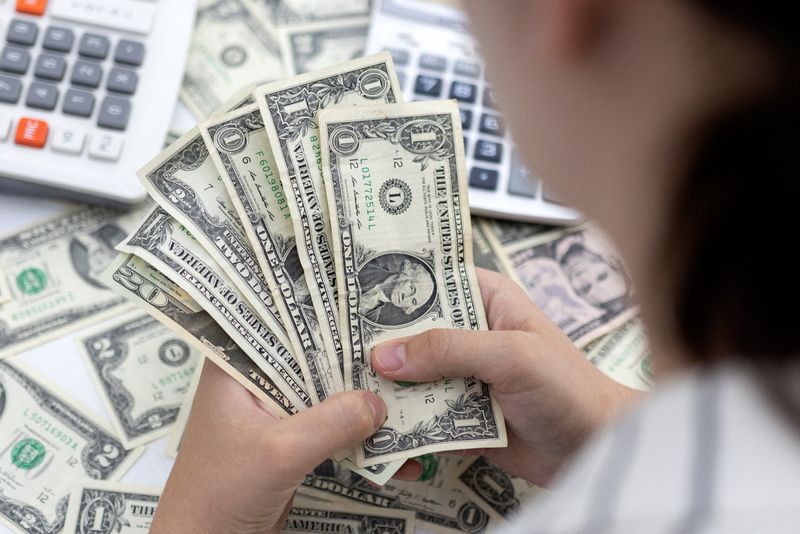By Chuck Mikolajczak
NEW YORK (Reuters) -The dollar weakened against most currencies on Thursday after economic data showed more signs of softening in the U.S. labor market, while the pound rebounded from earlier lows after the Bank of England opened the door for an interest rate cut.
Weekly initial claims for state unemployment benefits increased 22,000 to a seasonally adjusted 231,000, the highest level since the end of last August and above the 215,000 expected by economists in a Reuters poll.
The data followed last week's weaker-than-anticipated U.S. payrolls report and other data that showed job openings fell to a three-year low in March.
Market participants have looked towards a softening labor market as a sign that consumers will begin to slow spending and in turn help cool inflation. Data next week will include readings on consumer prices (CPI), producer prices (PPI) and retail sales.
"We did have a knee-jerk reaction in yields and the dollar lower this morning after the jobless claims number came in above expectations," said Karl Schamotta, chief market strategist at Corpay in Toronto.
Schamotta said there were some seasonal distortions in the claims report that may have led to the higher reading, but added that recent economic data "kind of suggests that we're seeing a deceleration in the world's largest economy, and if we do see a sequential decline in U.S. consumer/producer price indices next week as well as the retail sales number, then that could prick that U.S. exceptionalism trade that's been dominating markets for quite a long time."
The greenback showed little reaction to comments from Federal Reserve Bank of San Francisco President Mary Daly, who said she still sees a "really healthy" labor market and inflation that remains too high.
The dollar index, which measures the greenback against a basket of currencies, fell 0.22% at 105.28, with the euro up 0.28% at $1.0775.
Sterling strengthened in the wake of the U.S. data and was last at 0.18% at $1.2518. The pound had dropped to a low of $1.2446, its weakest level since April 24, after the Bank of England (BoE) paved the way for an interest rate cut.
The BoE's Monetary Policy Committee had voted 7-2 to keep the central bank's key policy rate at a 16-year high of 5.25%, with Deputy Governor Dave Ramsden joining Swati Dhingra in voting for a cut to 5%. BoE Governor Andrew Bailey said it was possible the central bank would need to cut rates by more than investors expect.
Against the Japanese yen the dollar edged 0.03% higher at 155.52 as hawkish opinions from Bank of Japan members helped slow the yen's fall. The dollar has been slowly recovering against the Japanese currency after it tumbled 3.4% last week, its biggest weekly percentage drop since early December 2022.
The yen had earlier strengthened to 155.15 per dollar, after the BOJ's summary of opinions showed board members were overwhelmingly hawkish at their April policy meeting, with many citing the need for steady interest rate hikes.
BOJ Governor Kazuo Ueda said the central bank will scrutinize the yen's recent declines in guiding monetary policy.

Market participants suspect Tokyo spent some $60 billion last week to stall the yen's slide after it hit its weakest level in 34-years against the dollar around 160 yen.
In a note on Thursday, Deutsche Bank's head of FX research, George Saravelos, reiterated that "as long as the BOJ sees no urgency to rapidly normalize policy, the fundamental backdrop for the JPY (yen) will not change."